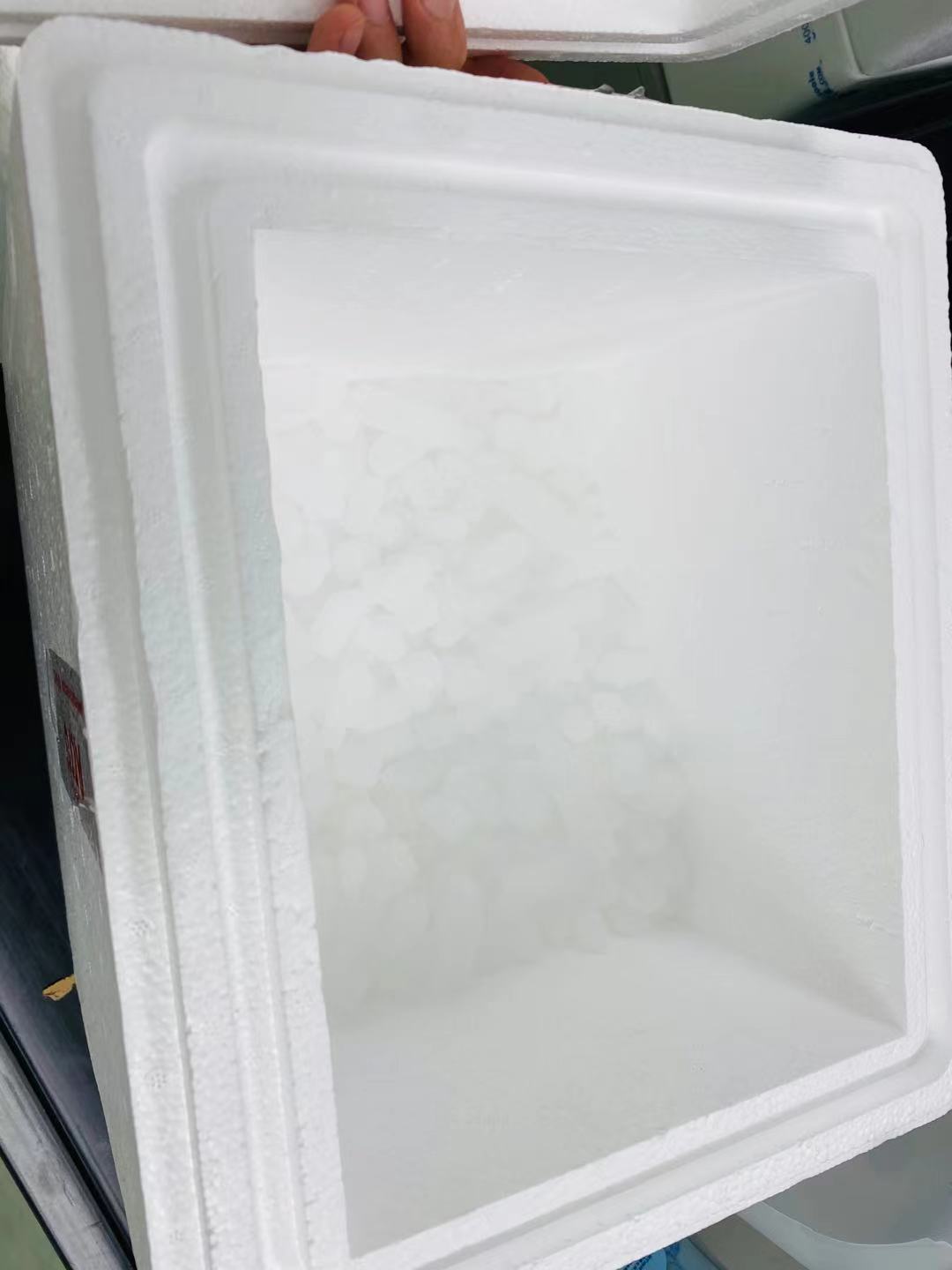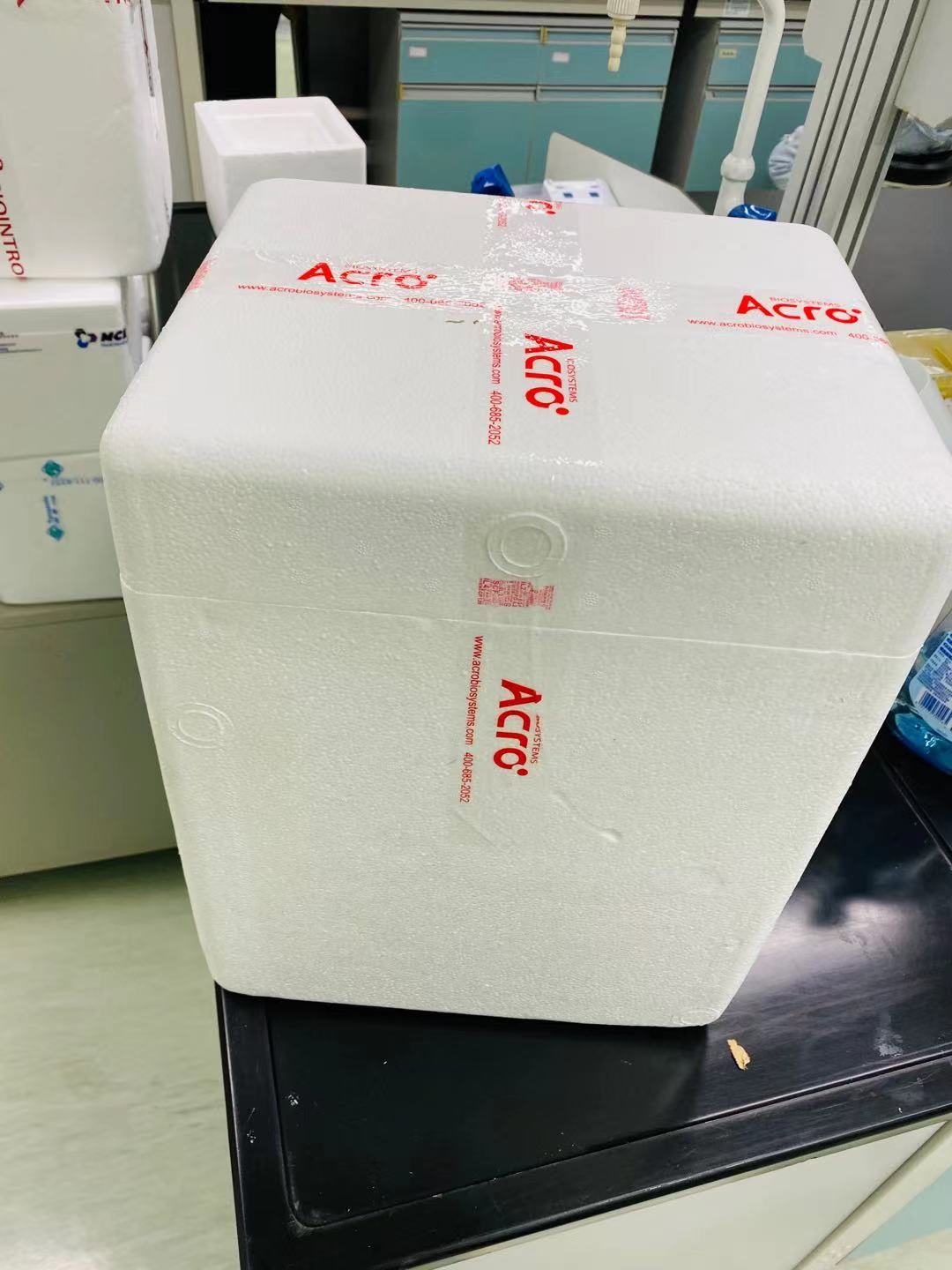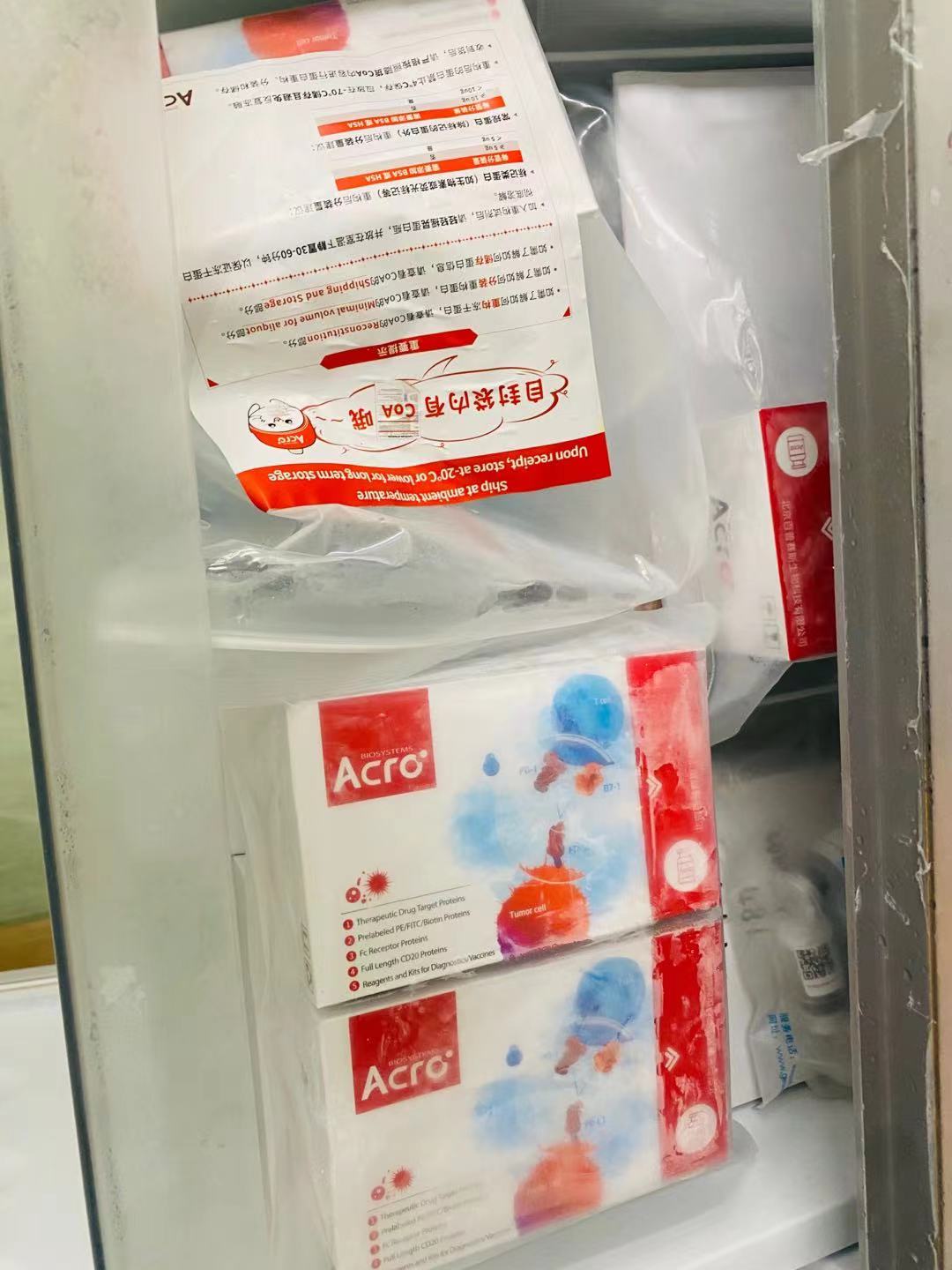抗体来源(Source)
Monoclonal Anti-Human CD3 Antibody, Mouse IgG2a (Clone: OKT3), premium grade (CDE-M120a) is recombinantly produced from human 293 cells (HEK293).
It is produced under our rigorous quality control system that incorporates a comprehensive set of tests including sterility and endotoxin tests. Product performance is carefully validated and tested for compatibility for cell culture use or any other applications in the early preclinical stage.
GMP-MC0323 is the GMP version of this CDE-M120a. These two proteins display indistinguishable performance profiles, thereby ensuring a seamless transition for end users from early preclinical stag to later clinical phases.
亚型(Isotype)
Mouse IgG2a | Mouse Kappa
偶联(Conjugate)
Unconjugated
特异性(Specificity)
This product is a specific antibody specifically reacts with CD3 epsilon.
内毒素(Endotoxin)
Less than 0.002 EU per μg by the LAL method.
蛋白A残留(Protein A)
<5 ppm of protein tested by ELISA.
宿主蛋白残留(Host Cell Protein)
<0.5 ng/μg of protein tested by ELISA.
宿主核酸残留(Host Cell DNA)
<0.02 ng/μg of protein tested by qPCR.
纯度(Purity)
>95% as determined by SDS-PAGE.
>95% as determined by SEC-HPLC.
无菌(Sterility)
Negative
支原体(Mycoplasma)
Negative.
制剂(Formulation)
Supplied as 0.2 μm filtered solution in PBS, pH7.4 with trehalose as protectant.
Contact us for customized product form or formulation.
运输(Shipping)
This product is supplied and shipped with dry ice, please inquire the shipping cost.
存储(Storage)
For long term storage, the product should be stored at liquid state at -70°C.
This product is stable after storage at:
- 2-8°C for 12 months under sterile condition;
- -70°C for 24 months.
质量管理控制体系(QMS)
电泳(SDS-PAGE)
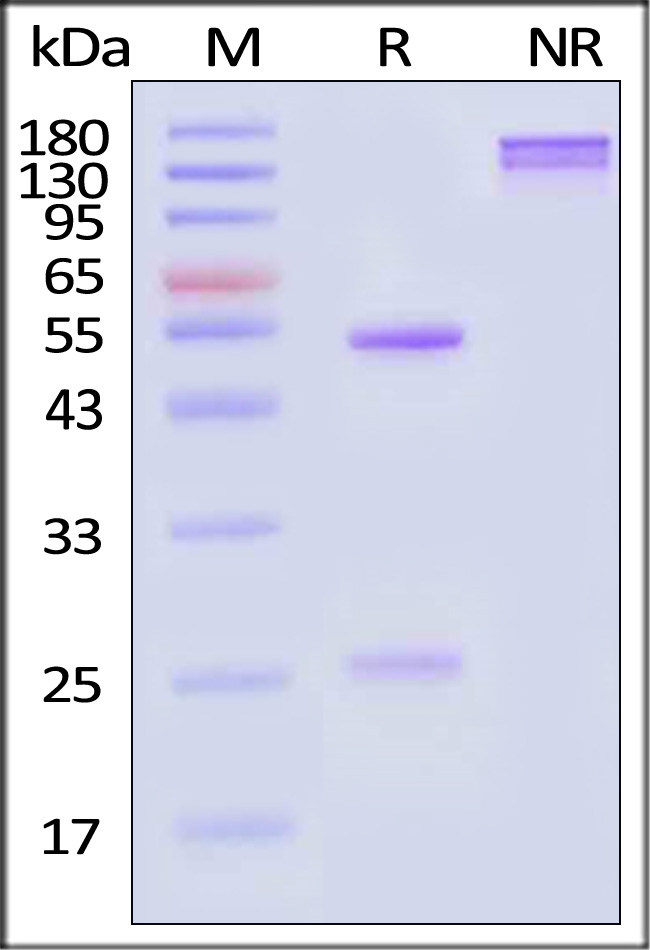
Monoclonal Anti-Human CD3 Antibody, Mouse IgG2a (Clone: OKT3), premium grade on SDS-PAGE under reducing (R) and non-reducing (NR) conditions. The gel was stained with Coomassie Blue. The purity of the protein is greater than 95% (With Star Ribbon Pre-stained Protein Marker).
SEC-HPLC
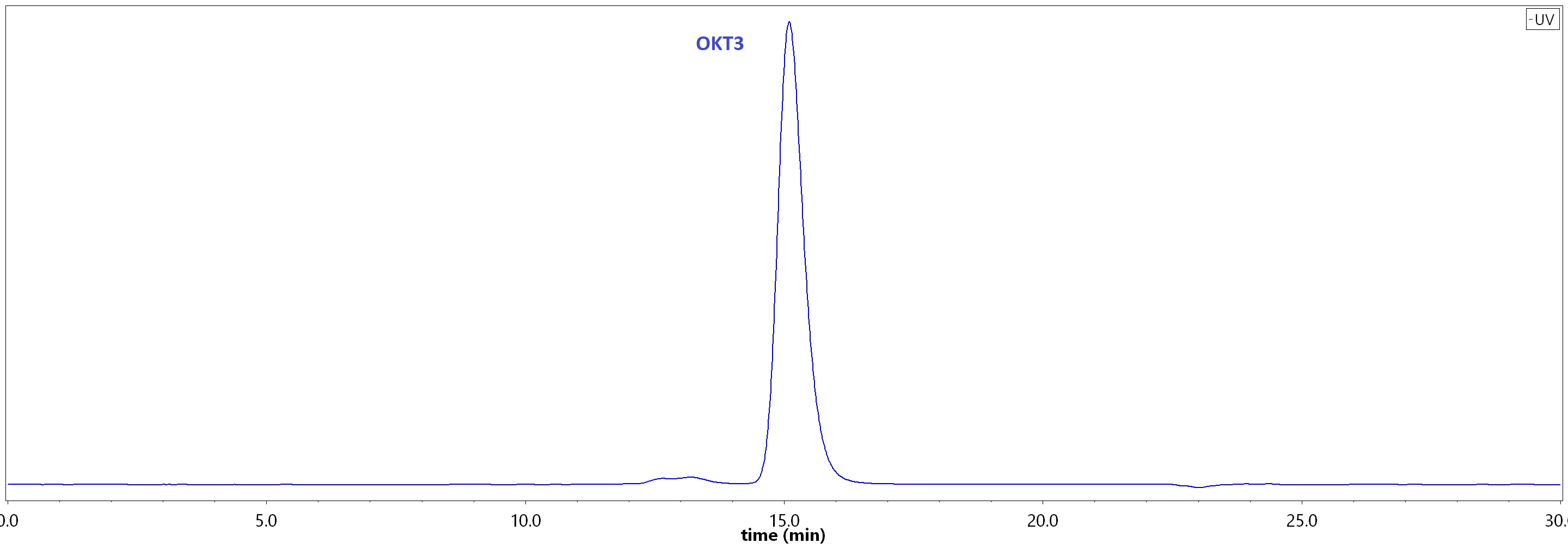
The purity of Monoclonal Anti-Human CD3 Antibody, Mouse IgG2a (Clone: OKT3), premium grade (Cat. No. CDE-M120a) was greater than 95% as determined by SEC-HPLC.
活性(Bioactivity)-CELL BASE
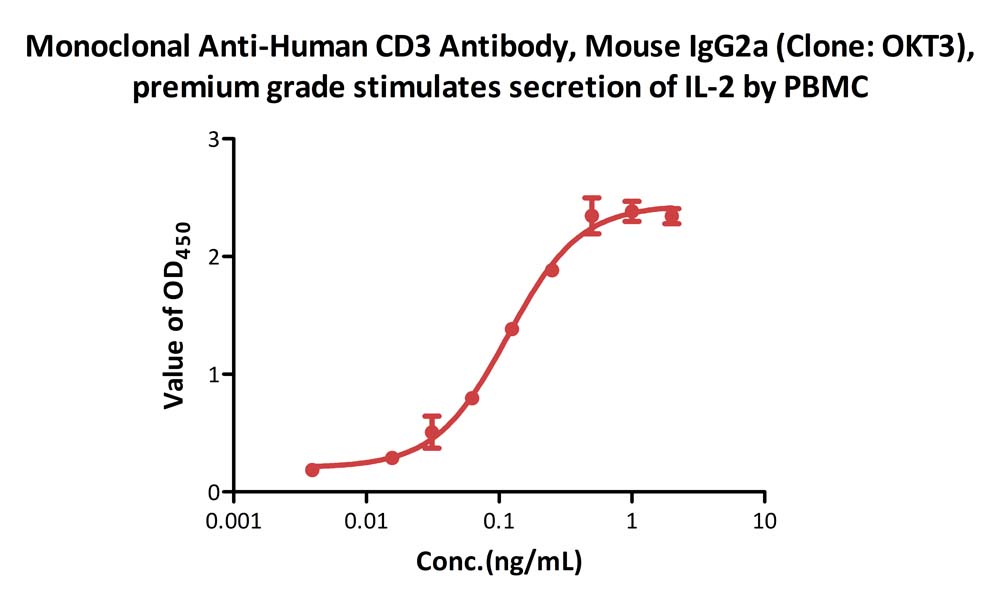
Monoclonal Anti-Human CD3 Antibody, Mouse IgG2a (Clone OKT3), premium grade (Cat. No. CDE-M120a) stimulates secretion of IL-2 by PBMC stimulated with 10 ng/mL Monoclonal Anti-Human CD28 Antibody, Mouse IgG1. The typically EC50 for this effect is 0.12 ng/mL (QC tested).
Protocol
稳定性(Stability)

The Cell based assay shows that Monoclonal Anti-Human CD3 Antibody, Mouse IgG2a (Clone: OKT3), Ultra-low endotoxin (Cat. No. CDE-M120a) is stable at 37℃ for 48 hours and after freezing and thawing 3 times.

The Cell based assay shows batch-to-batch consistency between Acro's GMP and PG CD3 Antibody.
 +添加评论
+添加评论背景(Background)
CD3e molecule, epsilon is also known as CD3E, is a T-cell surface single-pass type I membrane glycoprotein. CD3E contains 1 Ig-like (immunoglobulin-like) domain and 1 ITAM domain. CD3E, together with CD3-gamma, CD3-delta and CD3-zeta, and the T-cell receptor alpha/beta and gamma/delta heterodimers, forms the T cell receptor-CD3 complex. This complex plays an important role in coupling antigen recognition to several intracellular signal-transduction pathways. The genes encoding the epsilon, gamma and delta polypeptides are located in the same cluster on chromosome 11. The epsilon polypeptide plays an essential role in T-cell development. CD3E plays an essential role in T-cell development, and defects in CD3E gene cause severe immunodeficiency. CD3E gene has also been linked to a susceptibility to type I diabetes in women. CD3E has been shown to interact with TOP2B, CD3EAP and NCK2.























































 膜杰作
膜杰作 Star Staining
Star Staining








